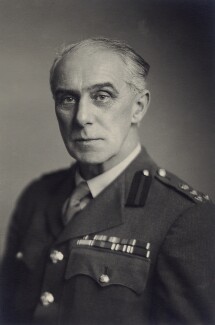Francis Albert Eley Crew facts for kids
Francis Albert Eley Crew was an important English scientist. He was a pioneer in the field of animal genetics. This means he was one of the first to do important work in this area. His work helped the University of Edinburgh become a world leader in studying animal genetics. He was the first head of the Institute of Animal Breeding and the first Professor of Animal Genetics there. Many people say he helped start the field of medical genetics, which looks at how genes affect human health.
Contents
Early Life and Education
Francis Albert Eley Crew was born in Tipton, England, on March 2, 1886. He was the only son of Thomas Crew, who owned a grocery store. As a child, he went to King Edward's School, Birmingham.
From a young age, Francis was very interested in breeding bantam chickens. He even won prizes at local shows for his chickens! He later studied medicine at the University of Edinburgh. He graduated as a doctor in 1912.
World War I Service
During the First World War, Francis Crew served as a doctor in the Royal Army Medical Corps. He became a Major. He worked with the 3rd Field Ambulance Service in France, helping soldiers. While he was away at war, another professor, Alan William Greenwood, managed the Institute.
Building a Genetics Institute
In 1920, a professor named Sharpey-Schafer asked Francis Crew to lead a new research center. This center was for studying animal breeding in Edinburgh. It started in one building and then moved to King's Buildings in 1924. There, it connected with the Chemistry Department.
Many brilliant scientists worked with him at the Institute. These included famous names like John Burdon Sanderson Haldane and Julian Huxley. The UK's first Pregnancy Diagnosis Laboratory was also set up under Crew. This lab helped people by using research to tell if animals were pregnant. In the 1930s, more scientists joined the team. Some came from Germany and Italy, like Charlotte Auerbach.
Academic Achievements
In 1921, Francis Crew earned a special degree called a DSc. This was for his research on how the sex of frogs is decided. He also got another medical degree (MD) that same year. In 1923, he earned a PhD for his work on a condition in cattle. This condition was similar to achondroplasia, which affects bone growth.
In 1928, he became the first Professor of Animal Genetics at the University of Edinburgh. This important position was partly funded by the Rockefeller Foundation.
Recognized by Societies
In 1922, Francis Crew was chosen as a Fellow of the Royal Society of Edinburgh. This is a big honor for scientists in Scotland. He served as the Society's Secretary from 1931 to 1936. Then he was Vice-President from 1936 to 1939. He also won the Society's Keith Medal for his work. In 1939, he was also elected a Fellow of the Royal Society of London. This is one of the oldest and most respected science organizations in the world.
World War II and the Polish School of Medicine
During the Second World War, Francis Crew did something amazing. He helped set up the Polish School of Medicine in Edinburgh. This school allowed Polish medical professors and students to continue their studies. It was open until 1949 and helped 228 students graduate.
In 1940, he was in charge of the Military Hospital at Edinburgh Castle. He noticed that many Polish doctors and students were in the military. He had the idea that these students could be taught by their own Polish teachers. He suggested creating a Polish Medical Faculty at the University of Edinburgh. The University agreed to this special school.
The University signed an agreement with the Polish Government in Exile in London in 1941. This created the Polish School of Medicine. Crew was one of eight Scottish professors who worked there. They taught alongside ten Polish professors. In 1943, the President of Poland honored Crew for his efforts.
In 1946, there was a special graduation ceremony for the Polish School of Medicine. A professor named John Crofton praised Crew. He said Crew had the "imagination" to make the school happen. During the war, Crew was also the Director of Medical Research for the War Office. He held the rank of Brigadier.
Later Career
In 1944, he became a professor of Public Health at the University of Edinburgh. Later, in 1955, he moved to Ain Shams University in Cairo. There, he taught about social and preventative medicine. From 1957 to 1958, he worked for the World Health Organization. He was a visiting professor at the University of Rangoon. In 1958, the University of Edinburgh gave him another special degree, a Doctor of Letters.
Francis Crew passed away on May 26, 1973.
Family Life
In 1912, he married Helen Campbell Dykes. She was also a medical student. Helen passed away in 1971. The next year, he married Margaret Ogilvie Withof-Keus. She had worked with him in the army medical corps.
Remembering Francis Crew
A painting of Francis Crew, made by Alfred Edward Borthwick, is part of the Edinburgh University Art Collection. There is also a photograph of him taken in 1945.
The Crew Building at Kings Buildings in Edinburgh is named after him. This building is a lasting reminder of his important work.


